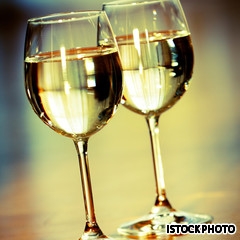‘Raksi’ from Nepal in World’s 50 most delicious drinks

By Tim Cheung
CNN has placed Nepal’s ‘Raksi’, an alcoholic drink in World’s 50 most delicious drinks. Describing ‘Raksi’ CNN has written, ‘Made from millet or rice, Raksi is strong on the nose and sends a burning sensation straight down your throat that resolves itself into a surprisingly smooth, velvety sensation’.
Recognition of Raksi by CNN is expected to attract food and drinks lovers from far and wide. Nepal has more to offer in culinary and drinks segment, most of them being indigenous with unique way of making.
This home brew drink is taken auspicious to celebrate festivals, which itself is the reason to celebrate. Raksi is ranked 41 in the list supersedes popular drinks such as Mango lassi, India, Guinness, Ireland, Fanta, Germany, Red Bull, Austria. Top on the list is global drink- water.
Few things unite tourists and locals like sitting down with a local bevvie. But which is your favorite? Details –
50. Mango lassi, India
Some of India’s lucky workers have migrated into the air-conditioned confines of its call centers and IT offices. For the rest, and for travelers there, reprieve comes in the form of a cooling, sweat-beating summer drink that acts like an internal sun screen.
Mango, yogurt and milk combine in creamy harmony making those sweltering afternoons fighting stray dogs for the shade almost something to look forward to.
49. Red Bull, Austria
OK, Red Bull is an acquired taste even on a good day. But nothing else in the history of drinks and beverages has made deadlines more hittable than this energy drink.It doesn’t really help you grow wings, but when served chilled its fruit-punch flavor explodes in your face like a slap from a sugary, caffeine-marinated cod.
48. Yakult, Japan
Drinking a carton of bacteria is hardly one of the world’s most marketable activities, however friendly they might claim to be.But if you can get over that, a vanilla tongue soak awaits that’ll make you wish each serving was more than just 100 milliliters.
47. Guinness, Ireland
When you’re talking Guinness, perfection is 119.5 seconds. That’s how long it takes for a perfect pint of this ruby red (not black) nectar to be poured according to brand owner Diageo.It’s packed with iron, it’s healthy (no really) and is one of the beer world’s smoother, earthier characters.
46. Pina colada, Puerto Rico
So good, someone wrote a song about it. Just looking at the drink brings you closer to a beach and sipping this mixture of coconut milk, pineapple juice and rum will send you directly to a hammock between palm trees in the Caribbean.
45. Cendol, Indonesia
Strictly speaking this is more of a watery dessert than a drink, and is served in a bowl, but at least that way you get to take bigger gulps.The mixture of creamy coconut milk and sweet palm sugar chilled by shaved ice will is the perfect antidote to the hawkers on Kuta beach.
44. Sujeonggwa, Korea
Made from dried persimmons, cinnamon, ginger and peppercorn, sujeonggwa is essentially a liquid made of spices, boiled and steeped in a cup.The cooking and cooling processes mean it can be hours before the final spicy, sweet and tangy flavors are ready for you. The brick-red extract is fragrant and appetizing, making the hours of preparation as agonizing as the result is rewarding.
43. Fanta, Germany
Created in Nazi Germany by an enterprising German Coca-Cola executive when shipments of Coca-Cola ingredients were halted during World War II, Fanta was so popular with Germans that three million cases were produced in 1943 — enough to keep the company’s German operations afloat during the war.
The brand’s workhorse is Fanta Orange, a soda marketed under campaigns sunny enough to brighten away its shadowy past.
42. Shikuwasa juice, Japan
For a fruit relatively unknown in the West, the Japanese shikuwasa has a familiar look about it. In fact, its sometime name of “flat lemon” reveals that it shares several characteristics with that yellow citrus, including an acidic punch.The Okinawa native, scientifically called Citrus depressa, yields a sharp juice that’s best diluted or added to a cocktail.
41. Raksi, Nepal
Made from millet or rice, Raksi is strong on the nose and sends a burning sensation straight down your throat that resolves itself into a surprisingly smooth, velvety sensation.
Nepalese drink this home brew to celebrate festivals, though we think that the prized drink itself is the reason to celebrate.
40. Coconut water, Global
You can eat its flesh raw or flaked and cook with its oil, but the best way to ingest the star of so many tropical scenes is to stick a straw inside and drink.Coconuts, technically a fruit, may kill more people each year than sharks, but they taste a whole lot better, too.
39. Scotch whisky, Scotland
We don’t like to be snobbish, but if you’re going to drink whisky you have to do it right. Whether single malt or blend, the favored drink of such eminent names as Winston Churchill and Margaret Thatcher has kept men and women warm and interesting for many decades.Don’t dare taint it with ice.
38. Mojito, Cuba-
It’s named after a Cuban seasoning, or an African amulet; it was invented by the Cubans, or in honor of Sir Francis Drake; it should be made fresh and simple, or you can change it up whatever your whim. All depending on who you ask.Everyone has their own take on the mojito, reportedly Ernest Hemingway’s favorite drink, so that the mix of white rum, lime, sugar, mint and soda water, can turn you into the life of the conversation, or a flailing, wailing drunk.
37. Cider, England
A glass of genuine farmhouse cider is about as similar to the mass-produced stuff in cans as apples are to horse manure. Steeped in cinnamon and cloves and swirling with unfiltered apple bits, a room-temperature mug of the real deal lends a warming, fragrant note to cruel winter days.
36. Martini, United States
You could try bastardizing this sacred cocktail with various pollutants — Appletinis? Chocolate martinis? Please stop! — but nothing is ever going to change the magic that gin, vermouth and olives do to a long day.
35. Yerba Mate, South America
Made by steeping the leaves of the South American rainforest holly tree in hot water, yerba mate ranks among the traveling world’s most surprising and pleasing discoveries.Served in a hollow gourd with a metal straw, the caffeinated bevvie is so much a part of the South American scene — popular in Argentina, Paraguay, Uruguay and southern Brazil– that drinking it there instantly turns you into a debonair local.
34. Champagne, France
You may love F1 drivers for their glamorous lifestyles, but you have to hate them for wasting all that Champagne every fortnight.
Champagne is the diamond of the drink world, taking its place on the podium as the beverage to have when celebrating pretty much anything.
In fact, take a gulp and you could almost imagine that a thousand little diamonds are bursting on your tongue, as the crisp, light fizzy beverage gets to work.
33. Carrot juice, Global
Healthy enough to feature in diet plans, but sweet enough to be enjoyed by kids, carrot juice is a jack of all trades.Don’t get too attached though. Drinking too much carrot juice has been known to turn the skin orange.
32. Baileys Original Irish Cream, Ireland
The benevolent wizards who make Baileys credit “38,000 of the top-bred Irish dairy cows grazing on approximately 1,500 selected Irish farms mainly on the east coast of Ireland” for producing the rich cream that makes their god-like elixir the top-selling Duty Free liqueur brand in the world.
Complements everything from coffee to Cointreau, but mixes best with the opposite sex.
31. Tequila, Mexico
If Tequila says to you hot, hazy nights with salt, lime, buxom waitresses and facial grimaces all blurring together, this entry’s not for you.The 100 percent blue agave Tequila requires no accessorizing; just sip, savor and repeat.
30. Sparkling water, Global
Tap water? What else you got on the menu tonight, monsieur, boiled hot dogs and bread crumbs?
Sparkling, carbonated, fizzy, with gas … whatever you call it, the mere addition of bubbles transforms plain old H2O into a stylish “beverage,” conferring upon you instant élan.
At least till you start burping it all back up.
29. Caipirinha, Brazil
Brazil’s national drink is a modern take on the Daiquiri and brings a refreshing base of lime together with a hint of Brazilian sugarcane rum.Garnish with a wedge or slice of lime, slurp, then beam like Ronaldinho after scoring a hat trick.
28. Chocolate milkshake, United States
This artery-clogging third musketeer (after burger and fries) of the fast-food world gives a sweet ending to all family meals out.And it may not even be as fattening as you think — the amount of energy spent trying to slurp this thick sludge up the straw must burn off at least a few of those calories.
27. Thai iced tea, Thailand
The best tea is served in a plastic bag from street carts, and looks bright orange, but in a good way. It’s a strong, sweet caffeine kick, made from strong-brewed black tea and then mixed with condensed milk and spices.If it wasn’t any good Vietnamese and Chinese restaurants wouldn’t bother stealing the recipe.
26. Irish car bomb, United States
The smooth sucker-punch of the ICB’s three ingredients has made it a let’s-get-ready-to-rumble guy’s-night tradition. Ritual is the key: float a half shot of Irish whiskey atop a half shot of Irish cream. Drop the glass into a half-pint of Irish stout, down quickly and wait for the bro hugs to begin. (Use Jameson’s, Baileys and Guinness for the classic version).
Too bad the Irish have never heard of it; like most offensive Irish sacraments, the drink was invented in the United States.
25. Bubble tea, Taiwan
More bubble than tea, this is a tea-slash-milk-slash-fruit drink and its most famous variety includes chewy “pearls,” resembling oversized frogspawn, at the bottom that you suck up with an oversized straw.It sounds weird, but it has become a favorite drink snack among Asia’s millions of young shoppers.
24. Raki, Turkey
Dubbed “lion’s milk,” raki is a potent liquor made from grapes or figs, but when diluted with water turns milky white and becomes a much tamer, licorice flavored aperitif.
It is popular as a seafood accompaniment, alongside mezze, before dinner, after dinner, with cheese, kebabs and melon. Basically anytime, anywhere, is good time for raki.
23. Milk, Global
Where would the breakfast cereal business be without milk? The only drink millions of people deliberately mix with their food every morning, milk is also the child’s bone-strengthening beverage of choice.Throw in the “Jackass” pranks involving liters of milk and vomiting, and you have a drink that’s funny as well as tasty.
22. Gatorade, United States
Gatorade makes you run faster, we heard, because losers could miss out on the after-race drinks.
Bad jokes aside, the sports drink originally created to replenish the water, carbs and electrolytes lost by athletes at the University of Florida has become a global success, with a 75 percent share of the sports drink market in the United States.
21. Eggnog, England
Bring in the eggnog and the otherwise long and torturous family gathering where everyone wears hideous sweaters turns into a joyous Christmas dinner. Or that’s the idea, anyway.This sweetened beverage of milk and beaten eggs tastes like an alcoholic creamy egg custard. Best served warm.
20. Sex on the beach, United States
When a young Florida barman entered a competition to sell the most cocktails, he called his peach schnapps, orange juice, cranberry juice and vodka concoction Sex on the Beach.Now he’s also responsible for the most juvenile of bar orders: “I’ll have Sex on the Beach, please,” snort snort.
19. Es kelapa muda, Indonesia
This popular Indonesian drink loved by kids is essentially chilled young coconut juice with colored-syrup and coconut slices.Fresh on the taste that lasts through your whole meal, es kelapa muda is Indonesian tradition at its finest and purest.
18. White wine, Global
You know when someone pays US$117,000 for a single bottle and stores it in a bullet-proof case that will only open to his fingerprint, the drink you’re talking about is something special.Christian Vanneque, owner of the SIP Wine Bar in Bali, forked out for a bottle of 1811 Chateau d’Yquem earlier this year to fulfill a lifelong dream.White wine may not be the most delicious drink in the world, but it appears to attract the most ardent fans.
17. Lemonade, Egypt-
Lemons, water and sugar. Doesn’t sound like much, but this summer refresher, first documented in Egyptian writings around 1,500 years ago, turns kids into happy angels and adults into happy kids.
If you can ignore the five spoons of sugar in your glass, it can even be considered healthy: it’s been said to aid digestion, relieve heartburn and control diarrhea and constipation.
16. Anything from a hotel mini-bar, Global
It’s one in the morning and you’re dying for some bottled water. Or apple juice. Or a Heineken.
Whatever it is, when you’re willing to shell out US$8 for a lousy drink in an undersized can, it damn well better be one of the most satisfying chugs you’ve ever had.
15. Sake, Japan
If you fancy a laugh, watch the look on a diner’s face when they see a first-time sake drinker “shoot” a small cup of sake.
Served chilled, hot or room temperature, depending on your mood or meal, sake is stronger than wine and weaker than vodka. No matter the temperature though, sake has a cool dry flavor, and like wine, flavor accents vary with quality and type.
14. Pastis, France
Although not as exciting, or as hallucinogenic, as its reckless cousin, absinthe, which in its true form is banned from civilization, the potent licorice-like pastis has just the right dash of floral and herbal qualities to make it a signature French drink.Served with chilled spring water at a strict ratio of five-to-one, pastis tastes like mellowed liquor with an appetizing anise flavor.
13. Kool-Aid, United States
Kool-Aid revolutionized powder mix drinks and sets the benchmark for kids in North America regarding the taste of flavored water.Its mascot, a jug, has perhaps the world’s worst slogan: “Oh yeah!” Luckily the drink tastes better.
12. Watermelon cucumber punch, Global
Take two of the world’s most refreshing fruits, throw them into a blender, add lime juice and syrup and you have the makings of what, on a sweltering day in the sun, can taste like a life-saving beverage.
11. Sangria, Spanish
So your parents-in-law pay you a surprise visit, and all you’ve got in the cupboard is a cheap bottle of red and some half-rotten fruits. Not to worry.
The Spanish came up with sangria, a sweet, carbonated wine punch that has entertained guests from all nations and tax brackets.Splash some brandy over it to bring out that spicy kick.
10. Hot chocolate with marshmallows, United States
If piña colada equals tropical beaches, then hot chocolate with marshmallows equals extra-thick mitten socks and couch loafing inside ski resorts.This drink is your only legitimate excuse to stay indoors when in the Alps.The rich and aromatic hot chocolate also makes gloomy winter mornings worth looking forward to.
9. Gin and tonic, England
Trust the Brits to make a medicine (the quinine in tonic water was used by the British East India Company to prevent malaria) more palatable by throwing in some booze.Still, we’re glad they did, as the clink-clink, glug-glug, fizzzz of a gin and tonic being poured is about as perfect an introduction to a balmy evening as it’s possible to find.
8. Red wine, Global
What sound does a fermented grape make? None, it just lets out a little wine.And thank God for that. Or rather, thank the Georgians. The region in what is now known as Eurasia is credited with the first wine production 8,000 years ago.Thanks to them we now have such enjoyable pairings as beef and Merlot, tuna and Pinot Noir and drunk Scottish students and Buckfast.
7. Orange juice, United States
O.J. earns a spot on our list just for reminding us of our childhoods. The refreshing, tangy, wholesome drink, first mass-produced and distributed in the United States around 1915, has always reigned king over its try-hard cousins, apple, watermelon, pineapple and tomato.
6. Air mata kucing, Malaysia
Malaysians have figured out the golden formula for making a delicious drink — make it sweet, cold and toss in some tropical fruits. Air mata kucing, or longan drink, is exactly that.Sweetened by rock sugar and dried longan, it also comes with winter melon and a cheap price tag.
5. Tea, Global
In Tibet the butter version keeps cold bodies warm and lips chap-free. In India it provides a sugary boost and a break from street chaos. In Japan it’s consumed in an elaborate ritual. In England it’s accorded magic potion status.Nothing seems quite so bad when you hear the words, “What you need’s a nice cup of tea.”There’s no arguing with the world’s second-most widely consumed drink (after water).
4. Beer, Global
Sure, the wheel was a great invention; so too the computer chip. But they don’t go nearly as well with pizza.
Whichever trooper first had the courage to drink steeped and fermented barley had to be a bit of a loose cannon, but thanks to him or her we now have such luminary beverages as Kronenbourg 1664, Weihenstephaner Vitus (winner of World’s Best Beer) and the unforgettable Santa’s Butt Porter, all of which are, as Homer Simpson puts it, “the cause of and solution to all life’s problems!”
3. Coffee, Ethiopia
There’s a reason coffee, said to have been discovered in Ethiopia, is one of the world’s most traded commodities — Monday mornings happen to all of us.This little green bean arguably deserves more than one entry in this list, but for all the various modes of ingestion — latte, cappuccino, mocha, American -– you only need to know one thing to start your day off well — there’s more where it came from.
2. Coca-Cola, United States
Invented by a pharmacist as a remedy to headaches in 1886, the world’s most popular carbonated soft drink is like the American dream in a can — from nothing, 85 eight-ounce cans of Coke were consumed globally per capita in 2008 — more than any other soda.
The drink has gone through various manifestations, including Diet, Cherry, Lemon and Zero, but it’s the original, with a brain-freezing, nasal-passage-penetrating kick that keeps ‘em coming back for more.
1. Water, Global
It’s great for washing cars, and when it falls from the sky it’s a perfect excuse to stay home and watch a war movie. But as the base of every other drink on this list, of every food in the world and indeed of all life, nothing beats a glass of pure, unsullied water for its thirst-quenching, revitalizing, life-giving properties.Especially when it comes in a shapely glass bottle with a fancy label and hefty price tag. The best part, you can make it even better on a hot day by just adding more water, frozen. Source: CNNGO











